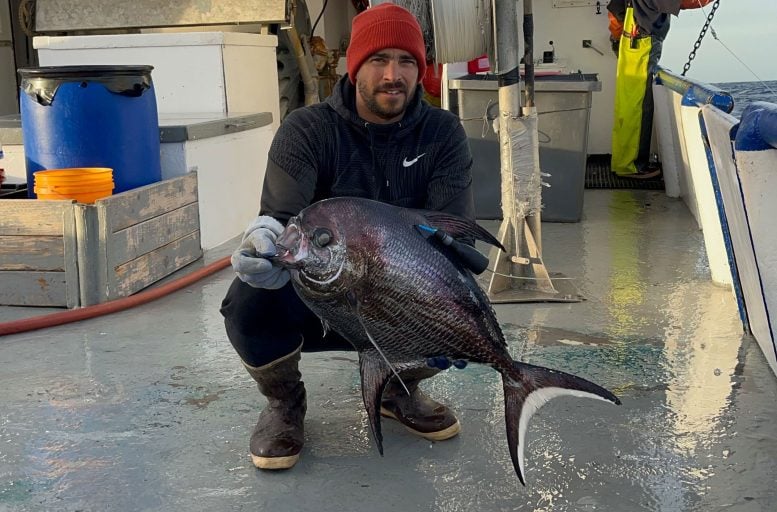
WHOI scientists explore the elusive fish’s role in the food web.
Scientists at the Woods Hole Oceanographic Institution (WHOI) have discovered that large sharks can spend extended periods in the ocean’s mesopelagic zone, located 200 to 1,000 meters (650 to 3,300 feet) beneath the surface. This twilight region contains more living biomass than any other part of the ocean, yet most of its creatures are too small to provide meals for large predators. This raises a central question: why do sharks linger there for so long?
A recent study in Marine Ecology Progress Series points to the significance of mid-sized predators, including the bigscale pomfret, in connecting surface waters with the deeper ocean.
Until now, researchers had little information on how pomfret and other similar fish travel, which made it difficult to understand their ecological role. To overcome this, the team used satellite tracking tags to monitor the movements of pomfret, a method that had rarely been applied to deep-sea fish in the past.
Tracking the Pomfret
“The data shows bigscale pomfret are permanent residents of the ocean’s twilight zone, and follow the pattern of diel migration. This means they stay deep during the day and come to shallower waters to feed at night,” said Martin Arostegui, lead author of the study and a research associate at WHOI. “Since these species spend a majority of their life on the move and in hard-to-reach places, it wouldn’t have been possible for us to tag enough of them during a few days at sea. Thus, we collaborated with a commercial longline fisher, Captain Danny Mears, who did that work as part of our research team.”
“Bigscale pomfret are so different from the tunas and swordfish we usually catch that we are fascinated by them whenever they show up in our gear,” Mears said. “My crew and I were excited for the opportunity to help with the satellite tagging for this study. It’s been very rewarding to see the data.”
Water Clarity and Migration
This new research also provides insight into how water clarity affects bigscale pomfrets’ migration patterns. When the fish moved from the Slope Sea to the clearer waters of the Sargasso Sea, their behavior changed noticeably. This indicates that water clarity influences the depth these fish occupy, which could impact food webs by changing the prey they target and their susceptibility to predators such as large sharks.
“We always talk about the mesopelagic layer like it’s this giant buffet for big predators—but we’ve been skipping over the species in the middle,” said WHOI biologist Camrin Braun, the senior author of the study and principal investigator of WHOI’s Marine Predators Group. “These mesopelagic fish are doing the hard work of connecting the deep ocean to the surface food web. If we don’t understand them, we’re basically trying to solve a puzzle with the middle pieces missing.”
Reference: “Movement ecology of a deep-pelagic mesopredator, the bigscale pomfret: implications for pelagic food web connectivity and fishery susceptibility” by Martin C. Arostegui, Danny Mears, Peter Gaube and Camrin D. Braun, 18 September 2025, Marine Ecology Progress Series.
DOI: 10.3354/meps14934
Never miss a breakthrough: Join the SciTechDaily newsletter.